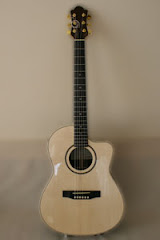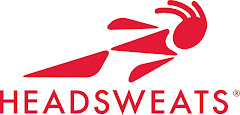heading out of Panamá City, the first part was a great oceanside cycle lane
Boat-Billed Heron seen at Panamá Vieja, (ruins of the original Panamá City which we passed on our way out of the metropolis)
wood stork and vultures
we cycled some of the route to Cartí on the old Pan-Am, which is now unsurfaced dirt and excellent riding
Jason climbing up towards the Continental Divide
this road was unbelievably steep in places; lowest gear, zigzagging, and plenty of tough work
...Chestnut-Mandibled Toucan...
...Sonia negotiating a fun curvy ride through the jungle...
arrived at the coast, we hopped on a big dugout canoe over to the nearby island of Cartí. We are now in the Comarca of Kuna Yala, an interesting political entity of Panamá, which has semi-autonomy, and is comprised of some 360 islands (38 inhabited) and wild jungle mainland strung out along the coast
one of the islands which comprise Cartí... the houses are packed up tight against each other, so there is nearly no open space on the islands...
map showing Comarca de Kuna Yala, and the route we would have to travel heading out of Cartí (not shown, but just beyond upper left of map)
Kuna Yala cook humor: this was a fish meal we had on Cartí
We craftily arranged a free stay in the Baptist Church on Cartí, while we waited for a cargo boat.
local kids. Kuna Yala kids are exceptionally playful.
(photo Sonja Huber)
(photo Sonja Huber)
Jason keepin' it real with the boys (photo Sonja Huber)
Kuna Yala acrobatics (photo Sonja Huber)
these lovely girls live next to the Baptist church (photo Sonja Huber)
the theme here is boat travel. Both women and men ply the waters around the islands
this is the Cartí schoolboat! going around the nearby islands and dropping kids off at home
... waiting for a boat... (photo Sonja Huber)
This image captures an epic moment in Volks on Bikes history. A cruise ship unexpectedly showed up at Cartí our our fourth day (!!) of waiting for a boat, and we decided to entertain the tourists for awhile. We made $23 in one hour, while playing American folk standards and having a big laugh. Sonia on percussion.
...sunset at Cartí...
Kuna gourd art (photo Sonja Huber)
The wait goes on... and on... we eventually linked up with an Argentinian and a Chilean, who also slowly became exasperated during the wait...
unloading a cargo boat on the docks (photo Sonja Huber)
A curious element of Kuna Yala culture: they fly the swastika. Apparently, its symbolism is similar to the ancient Hindu predecessor to the swastika, but either way a striking image.
We finally got off of Cartí when we were just about to lose our minds, and we headed down the coast on a speedboat for transport, rather than a (desired) cargo boat, which never showed up.
Jason and Sonia elated to have left Cartí
now on Ustupu (about halfway to the border), we hoped for better luck to continue towards Colombia
"Eternal Glory to the Heroes of 1925" - year in which the Kuna Yala, after centuries of repression and violence by the hands of first the Spanish, then the Colombians, then the Panamanians, revolted and declared themselves independent. There were some massacres of Panamá soldiers, and a quick violent response by the Panaman government, but the upshot was a treaty in which the Kunas could retain their cultural rituals and religion and lifestyle and have semi-autonomy over their lands.
the women always display colorful beads on their legs
Kuna woman on cell phone
Ustupu is an important frontier police port, and we had some runins with the police when we failed to stand and salute the lowering of the Panamá flag. Sonia started it all by not getting out of her hammock the first time they lowered the flag.
the mainland across from Ustupu
our stay in Ustupu got to be very long, unfortunately, so that we learned a good deal about local activities. Above are Colombian marine merchants waiting out a heavy rain. They come to buy coconuts from the Kunas, and this process is excruciatingly slow. They fill their boats with 120,000 coconuts before returning to Cartagena... but the coconuts arrive 15 at a time, and the Colombians sit around all day every day buying about 200 coconuts a day, which should take 5 minutes, but in the 15th-century local mentality, takes a full day. They need over a month going from island to island to gather the coconuts they need: in Colombia they are used to make arroz-coco, a delicious plate based around savoury coconut rice.
a Colombian cargo boat at Ustupu
this wait got to be too long as well; Jason croons, Sonia reads, Facundu (Argentinian) pulls his hair out, Sebastien (Chilean) taps his guitar
important moment on Ustupu: the plantains arrive
Panamá frontier police
... the impressive Ustupu island toilets...
right into the water, and the current takes it away from the island
...now on Calidonia after being rescued from Ustupu...
... amazing sunset colors...
Curious port rules for Calidonia, as if the Colombian sailors were pirates; 1: Pay the port tax 2: Pay the vendor tax 3: It is prohibited to buy coconuts from outside the local community 4: It is prohibited to walk around the village between 6:30 PM and 6:30 AM 5: Women and kids are strictly not allowed to board motorized boats
Jason and local kids on Calidonia
waiting out a storm en route to the border at Puerto Obaldia
...one of the last Kuna villages before the border...
our first visible evidence of FARC, still in Panamá: this billboard is praising the generosity of Panamá for helping resettle FARC soldiers. Seen in the border town of Puerto Obaldía.
loading the bikes for the ride into Colombia, Puerto Obaldía
arrived at the docks at Turbo, Colombia, finally!
here we met Arnaud, a Belgian adventurer who is aiming to cycle to and climb the highest peaks in nearly every country in the Americas! (see http://www.thehighestworld.com/)
... iguana in the road in Turbo, here the locals dont eat them, thankfully...






































































